Expert’s Rating
Pros
- Excellent contrast ratio
- Good motion clarity with 170Hz refresh rate
- Large, sharp display
Cons
- Stand can only adjust for tilt
- Below-average color performance
- Lacks speakers, USB hub, or other standout feature
Our Verdict
The Gigabyte GS32QC delivers a big, curved display at a budget price, though its color performance fails to impress.
Want a big monitor? You have no shortage of options and, in 2023, many are surprisingly affordable. Gigabyte’s GS32QC is an excellent example. It packs a 32-inch curved display with 1440p resolution, yet retails below $250. The monitor is a good value if you want maximum size for minimum price, but it doesn’t outperform similar alternatives.
Further reading: See our roundup of the best gaming monitors to learn about competing products.
What are the Gigabyte GS32QC’s specs & features?
The Gigabyte GS32QC is a 32-inch widescreen monitor with a native resolution of 2560×1440 and a refresh rate of 165Hz. These specifications are typical for a gaming monitor priced at $249.99. It’s possible to find 32-inch 240Hz monitors at this price point, but most limit resolution to just 1080p.
- Display size: 32-inch widescreen
- Native resolution: 2560×1440
- Panel type: Vertical Alignment (VA)
- Refresh rate: 165Hz
- Adaptive Sync: AMD FreeSync Premium
- HDR: HDR Ready
- Ports: 2x HDMI 2.0, 1x DisplayPort 1.4, 1x 3.5mm audio jack
- VESA mount: 100x100mm
- Speakers: None
- Price: $249.99 MSRP
Gigabyte skimps on the extras. There’s no USB hub, no speakers, and no ergonomic stand. None of this is unusual for the price, but the lack of extra features limits the monitor’s appeal to gamers, and gamers alone.
How is the Gigabyte GS32QC’s design?
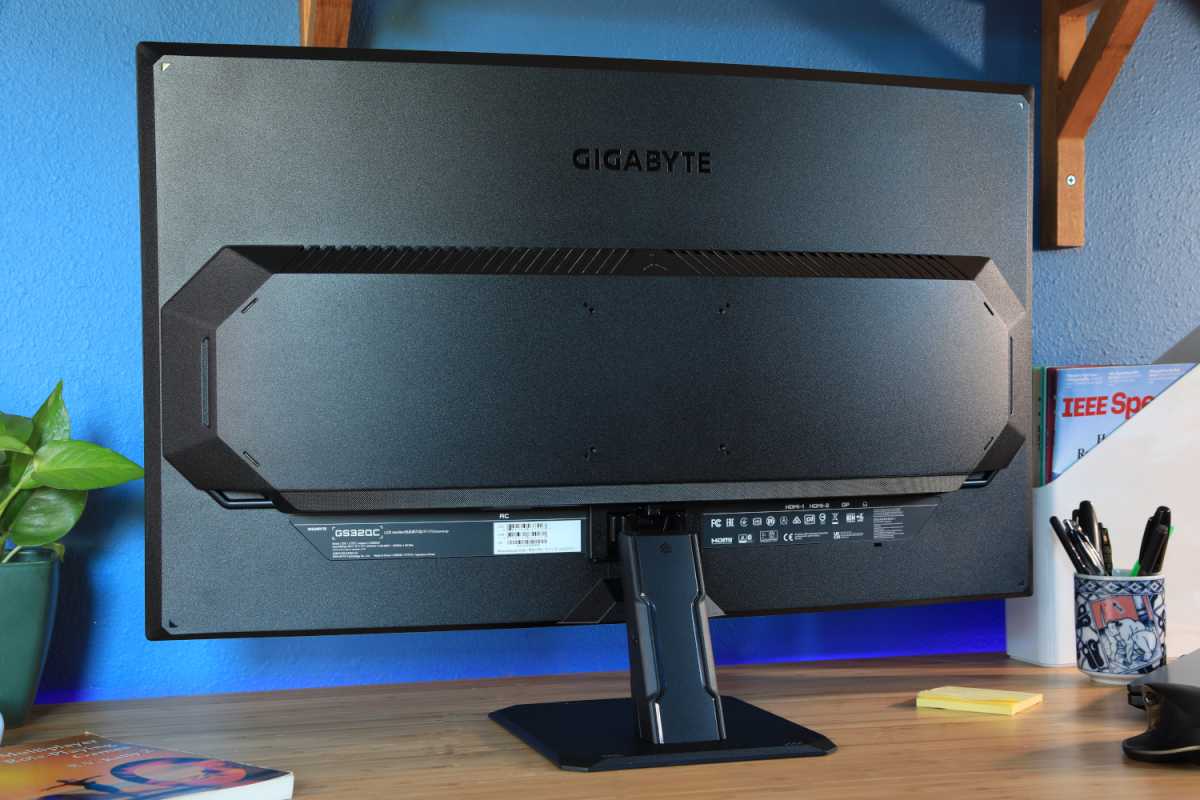
The Gigabyte GS32QC’s design is a rather uninspired matte-black plastic exterior.
Matt Smith
The Gigabyte GS32QC’s design is unremarkable. It opts for the matte-black and semi-gloss plastics common to many inexpensive monitors, and while Gigabyte adds a little flair with faux-vents on the back and etchings in the stand base, it still looks generic.
Yet one element does stand out: the curve. This is a curved monitor with an aggressive 1500R curvature. A curvature of 1500R means it would complete a full circle if the screen extended for 1500 millimeters (or 1.5 meters). So, in this case, a lower number is more aggressive than a higher number.
The curve delivers more immersion in some games, like simulators or shooters. But it may also cause distracting visual distortion, as lines that should appear straight instead seem curved. Whether the trade-off is worthwhile depends on your use. I find it’s nice to have in games, but annoying when editing photos and browsing the web.
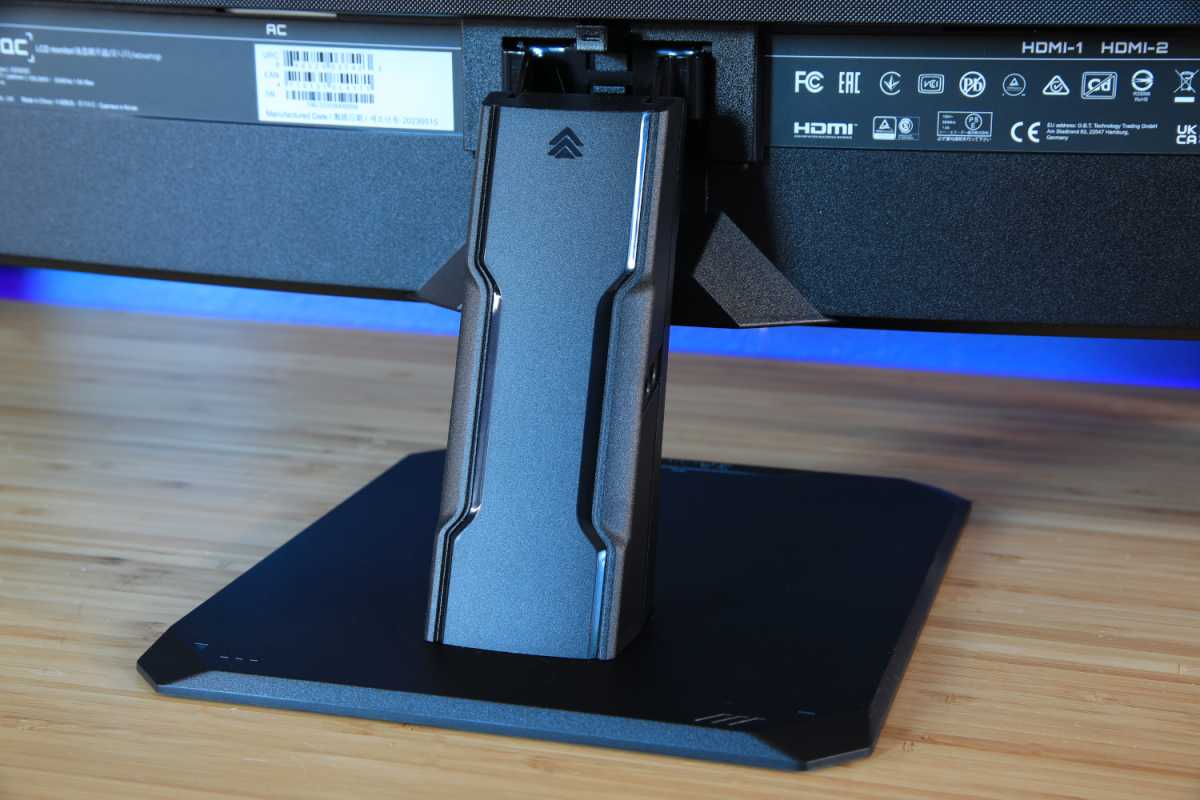
The Gigabyte GS32QC’s monitor stand is surprisingly sturdy.
Matt Smith
The GS32QC also has a sturdy but simple stand that clips into the bottom of the monitor and only adjusts for tilt. It’s a minor disappointment, but most similarly priced competitors offer the same type of stand. Fortunately, the GS32QC supports a 100x100mm VESA mount, so it’s compatible with most third-party monitor arms.
How is the Gigabyte GS32QC’s connectivity and menu?
Flip the GS32QC around and you’ll find two HDMI 2.0 ports alongside a single DisplayPort 1.4 for a total of three video inputs. That’s standard for an inexpensive gaming monitor. All video inputs can handle the monitor’s maximum resolution of 1440p at its maximum refresh rate of 170Hz.
A 3.5mm audio port for passthrough audio is the only additional connectivity available. USB is not included. That’s a shame but common for 32-inch monitors sold below $300. Gamers who want a USB hub or USB-C connectivity must step up to a higher price bracket.
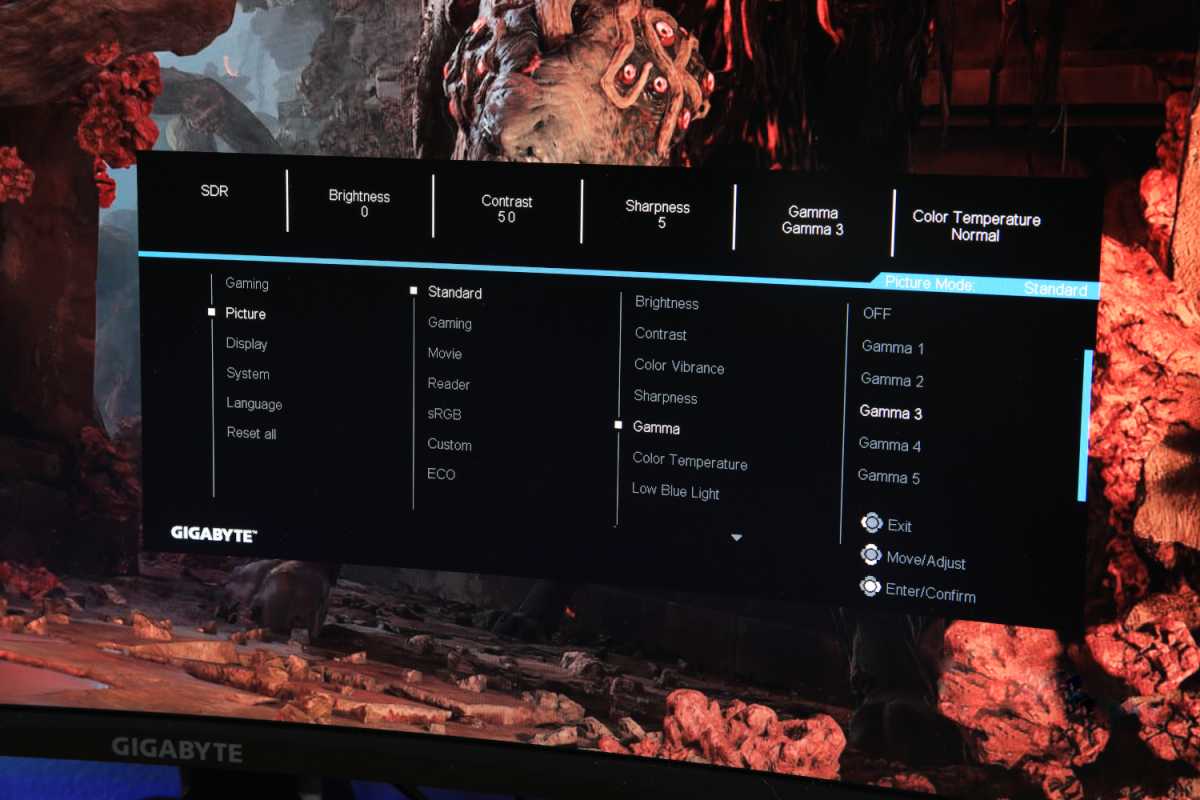
Gigabyte included an excellent menu system with the GS32QC.
Matt Smith
While the monitor’s connectivity is basic, Gigabyte provides an excellent menu system controlled by a joystick centered behind the bottom bezel. It has useful image-quality options, like gamma and color temperature adjustment, and multiple gaming features including an on-screen crosshair and a Black Equalizer (which boosts the brightness of dark scene to reveal foes).
The menu system is well-labeled and easy to navigate, too. Brands like Dell and Asus can match Gigabyte here, but bottom-dollar alternatives like AOC and Spectre often have slower, less responsive menus that are more difficult to navigate.
While the monitor’s connectivity is basic, Gigabyte provides an excellent menu system controlled by a joystick centered behind the bottom bezel.
How is the Gigabyte GS32QC’s SDR image quality?
The Gigabyte GS32QC has a 32-inch Vertical Alignment (VA) panel with an edge-lit LED backlight and a native resolution of 2560×1440. These are typical specifications for any budget 32-inch gaming monitor, so the monitor’s image quality doesn’t deliver any surprises.
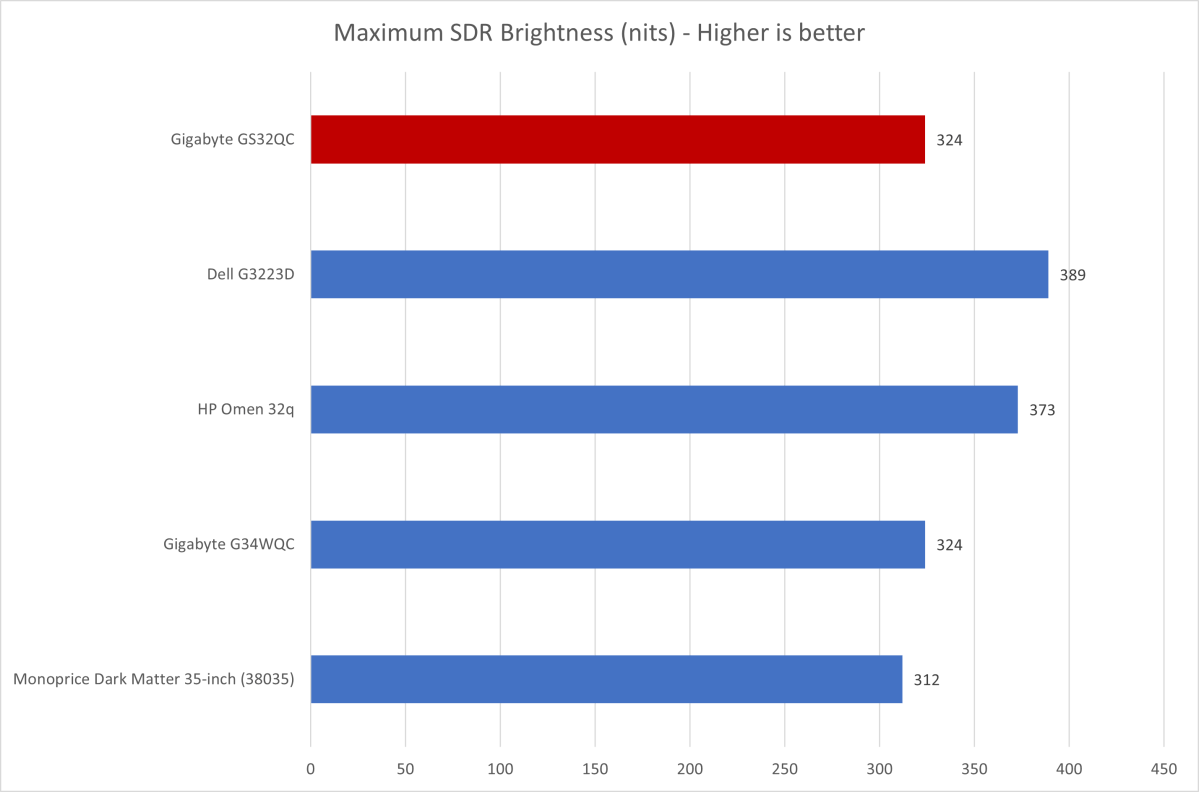
Matt Smith
I measured a maximum sustained brightness of 324 nits in SDR content. That’s not the best among competitor monitors, but not the worst, and it’s more than bright enough for use in most gaming dens or a home office.
A quick word of caution, however: The curved display has the effect of focusing light from certain angles, which can make glare more distracting. The monitor’s brightness can seem dim if you have a bright light, or a large sunlit window, adjacent to the monitor.

Matt Smith
The GS32QC delivers a huge win in contrast with a maximum measured contrast ratio of 4840:1. That’s excellent for a budget monitor.
Credit the Vertical Alignment (VA) panel. This type of panel tends to offer a contrast ratio three to four times superior to an In-Plane Switching (IPS) panel, which is used by many competitive monitors. The GS32QC looks immersive and delivers a great sense of depth in both games and movies. It’s not perfect, so you’ll still notice a hazy gray sheen when viewing a dark scene or image in a dimly lit room, but the problem is less distracting than most similarly priced monitors.

Matt Smith
Color gamut, on the other hand, is a weakness. The GS32QC covered just 94 percent of the sRGB color gamut and 78 percent of DCI-P3, figures that place it well behind alternatives like the HP Omen 32q and Dell 3223D.
The monitor’s narrow color gamut degrades the vibrance of games, movies, and everything else viewed on the display. Content tends to look dull and flat relative to other monitors. Monitors that have this problem usually suffer from a poor contrast ratio, but in this case the color gamut is the culprit.
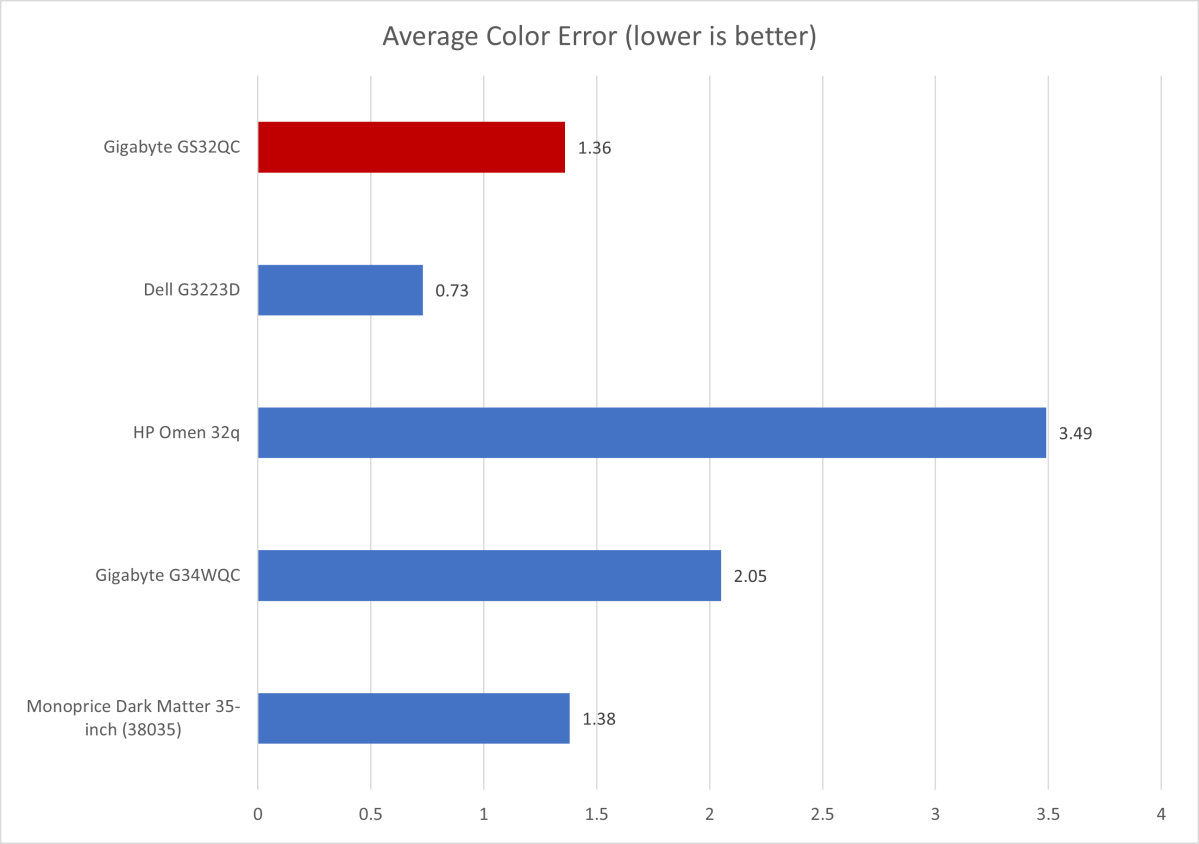
Matt Smith
While the Gigabyte’s range of colors isn’t as broad as alternatives, the colors available are accurate and in range with most competitor monitors (though the Dell G3223D outperformed in my testing). That means content will look close to what its creator intended, except when displaying colors the GS32QC can’t handle.
The GS32QC has a spot-on default gamma curve of 2.2 and an ideal default color temperature of 6500K. That means the content looks about as bright as it should and doesn’t appear too warm or too cool. Gamma and color temperature preferences can vary from person to person but, as mentioned earlier, the GS32QC offers several gamma and color temperature modes for dialing in the image.
Sharpness is respectable, as well. The monitor’s native resolution of 2560×1440 spread across a 32-inch widescreen display leads to a pixel density of about 92 pixels per inch. That’s similar to a 24-inch 1080p monitor and better than a 27-inch 1080p monitor. Small fonts are easy to read but will show pixelation on close inspection. The same is true of fine, detailed objects in 3D games.
The Gigabyte GS32QC’s overall image quality is acceptable, but not exceptional, for an inexpensive gaming monitor. It does well in contrast and color accuracy but delivers mediocre brightness and falls behind in color gamut. It’s best for gamers who prefer dark, gritty games that demand good contrast performance.
How is the Gigabyte GS32QC’s HDR image quality?
Gigabyte lists the GS32QC as “HDR Ready” but, like all inexpensive monitors, this guarantees nothing more than the ability to display an HDR signal.
Brightness is part of the problem. I measured a maximum HDR brightness of 324 nits, which is precisely the same I measured in SDR. The GS32QC also lacks the color gamut necessary to present HDR. Content created specifically for HDR will usually target a very wide color gamut, like Rec.2020, which is far beyond what the GS32QC can present.
None of this is unusual for a budget monitor. Quality HDR monitors start above $500, and most exceed $1,000. Still, shoppers should be warned. The GS32QC is not a good monitor for HDR.
How is the Gigabyte GS32QC’s motion performance?
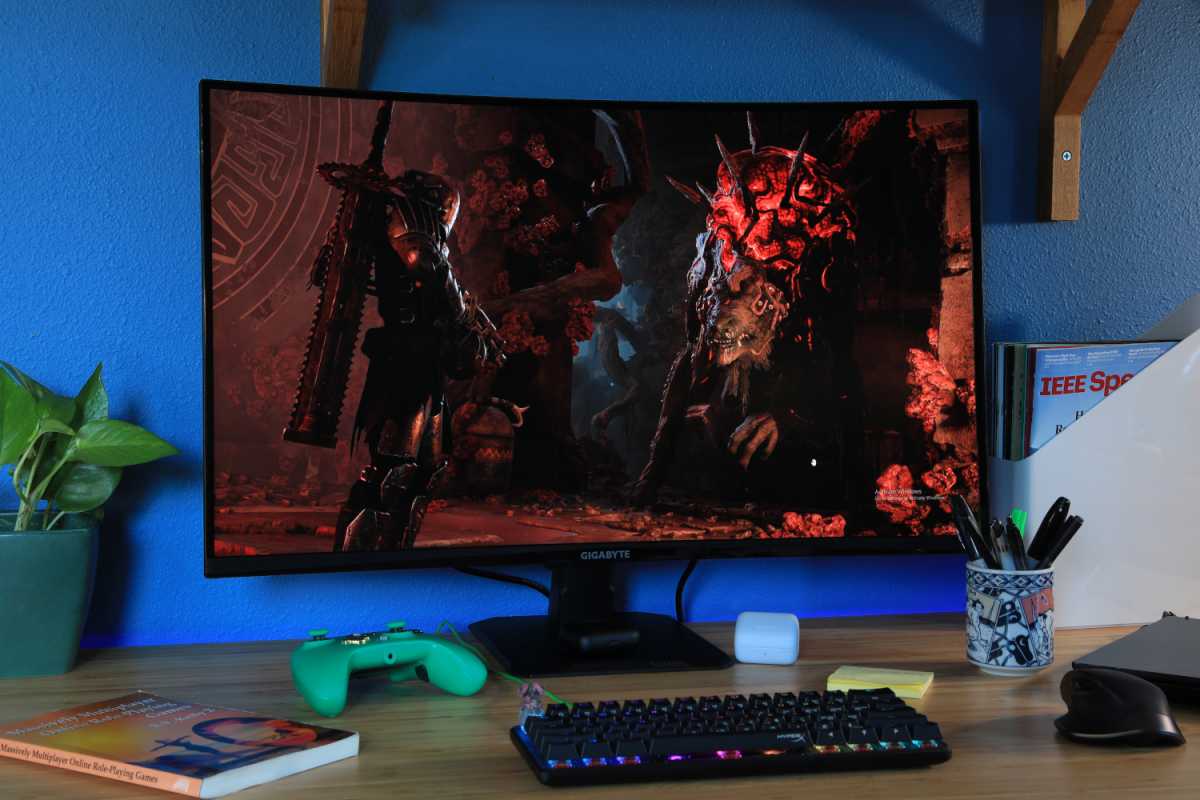
The 170Hz refresh rate on the Gigabyte GS32QC isn’t top of the line, but it’s nothing to laugh at either.
Matt Smith
The Gigabyte G32QC has a maximum refresh rate of 170Hz when overclocked and 165Hz when not.
To be clear, the 170Hz overclock is marketing fluff. I’m a big believer in the benefit of high refresh rate monitors, but even I won’t try to convince you that a difference of 5Hz is noticeable. Yet a 165Hz refresh rate is nothing to laugh at, and it makes the monitor feel smoother and more fluid than a 60Hz display.
Motion clarity is solid for a budget monitor with a VA panel. Fast-moving objects show good detail, and quick camera pans in 3D games will preserve most elements of the surrounding scene. Dark objects tend to show more blur than bright objects, a problem common to monitors with a VA panel. Still, overall motion clarity is good for the price.
The GS32QC I tested had its Overdrive mode turned on by default. This can reduce the motion blur I mentioned but leads to a different problem known as overshoot, which may cause the image to appear oversharpened in motion.
I found the GS32QC’s motion was cleaner and more natural with Overdrive off, and I’d recommend that for most gamers. Still, it depends on your preferences. You might want to keep it on when playing a competitive shooter.
Is the Gigabyte GS32QC worth it?
The Gigabyte GS32QC is a good budget gaming monitor for those who want a big screen on a very tight budget. It posts good results in contrast, color accuracy, sharpness, and motion clarity, and supports them with an acceptable design and intuitive menu system with many image quality options. The GS32QC faces alternatives that offer a better overall experience, like the HP Omen 32q or Dell G3223D, and Gigabyte fails to deliver any single feature that places the GS32QC ahead of the pack. Still, it’s a reasonable value when discounted below its $249.99 MSRP.




